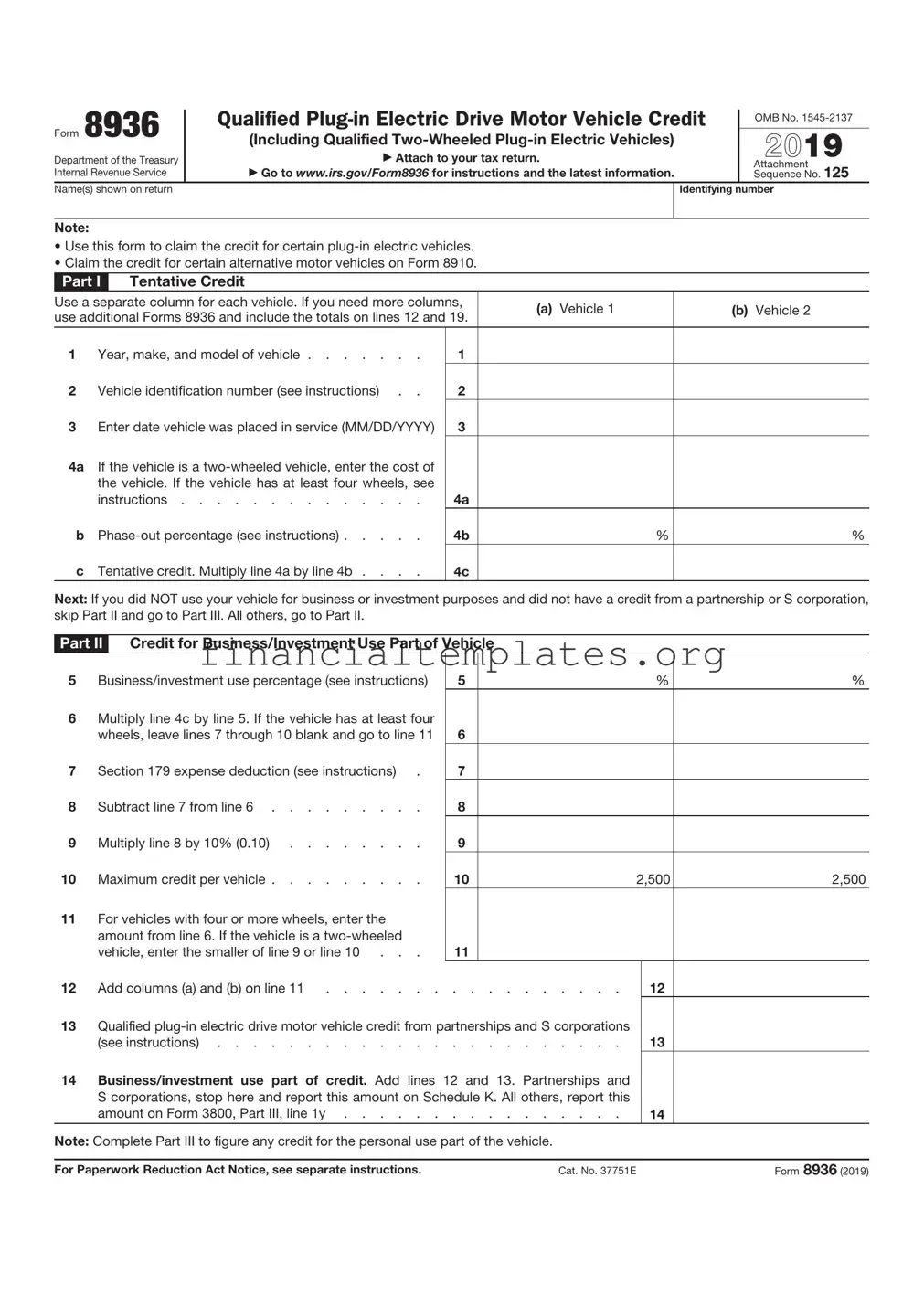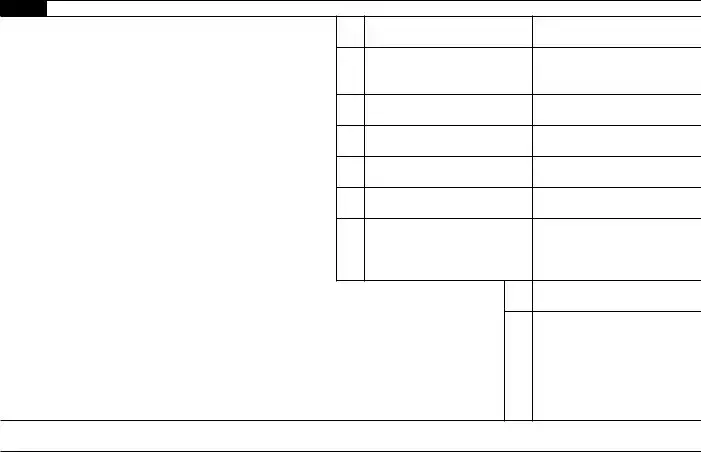The IRS Form 8936 is closely related to Form 8911, which is used for the Alternative Fuel Vehicle Refueling Property Credit. Both forms are designed for taxpayers who want to claim a credit, but they serve different purposes within the realm of energy-efficient investments. While Form 8936 is specifically for the credit for purchasing plug-in electric drive vehicles, Form 8911 targets the costs associated with installing alternative fuel vehicle refueling stations. Their similarity lies in encouraging environmentally friendly practices through tax incentives, though their focus diverges into different aspects of energy efficiency.
Another document sharing a purpose with IRS Form 8936 is Form 5695, Residential Energy Credits. This form is utilized by homeowners to claim credits for residential energy-efficient improvements, including solar, wind, geothermal, and fuel-cell technology. The common thread between Form 8936 and Form 5695 is the government's initiative to encourage energy conservation and the use of renewable energy through financial incentives. While Form 8936 focuses on plug-in electric vehicles, Form 5695 encompasses a broader range of residential energy upgrades.
Form 8864, Biodiesel and Renewable Diesel Fuels Credit, also parallels IRS Form 8936 in its encouragement of environmentally friendly energy use, albeit in the fuel sector. Taxpayers use Form 8864 to claim a credit for biodiesel, renewable diesel, and related fuels used in their business or farming activities. Like Form 8936, which supports the adoption of electric vehicles, Form 8864 promotes the use of alternative fuels to lessen dependence on fossil fuels, reinforcing the government's commitment to clean energy and reduced emissions.
Finally, Form 8908, Energy Efficient Home Credit, is akin to Form 8936 in its support for green energy solutions, but it focuses on the construction and renovation of energy-efficient homes. Builders of new homes that meet certain energy-saving criteria are eligible for this credit. Through Form 8908, the initiative is to decrease the overall energy consumption of new homes, much like Form 8936's aim to increase the use of electric vehicles. Both forms are part of a larger government effort to incentivize energy efficiency and sustainability in different sectors.


